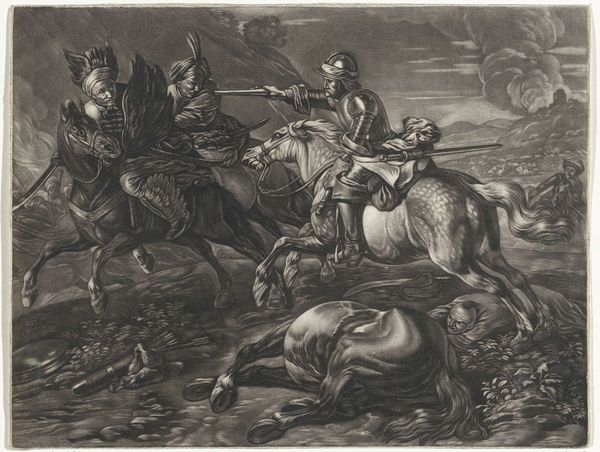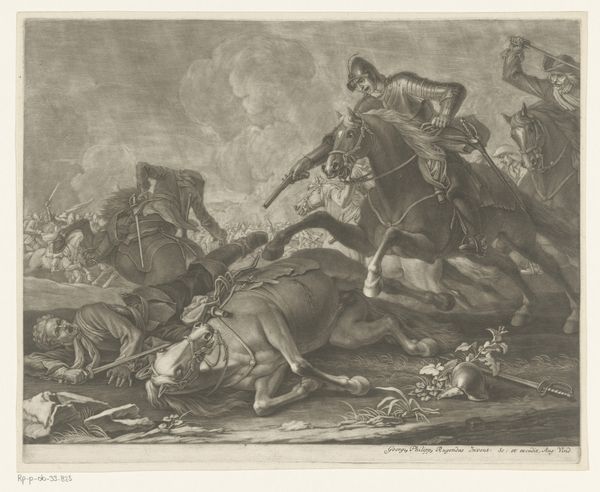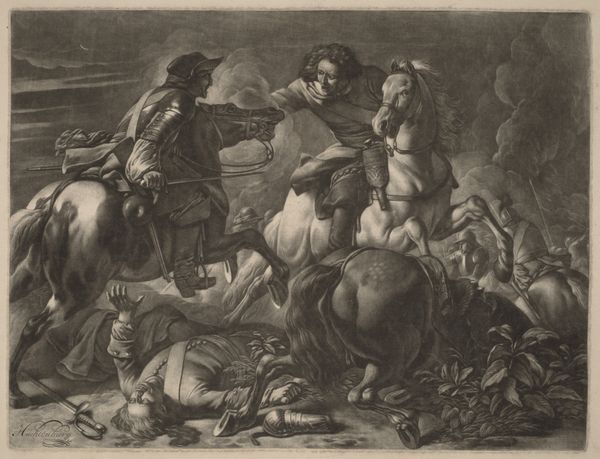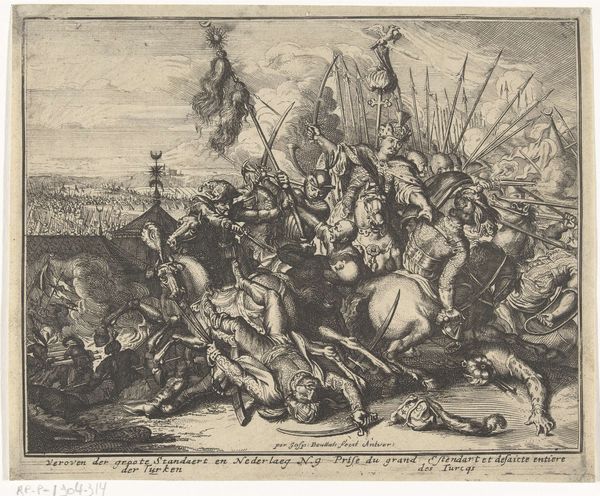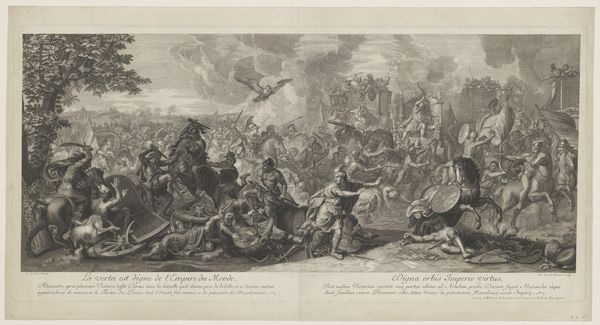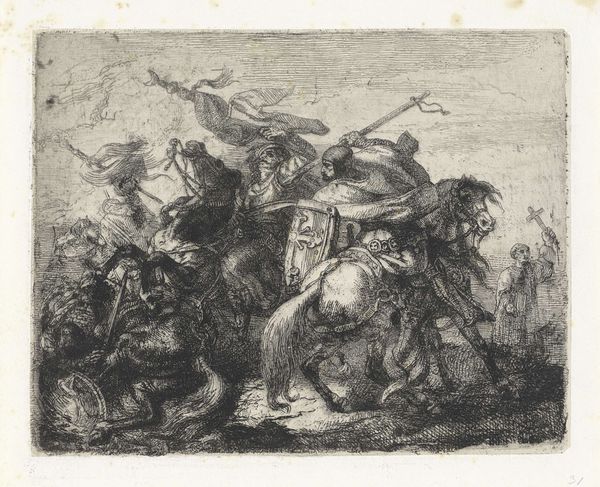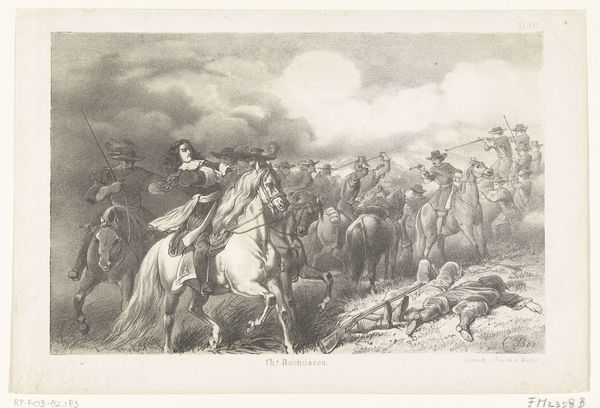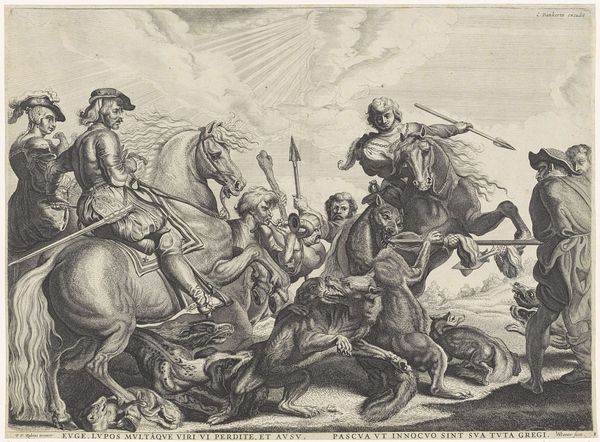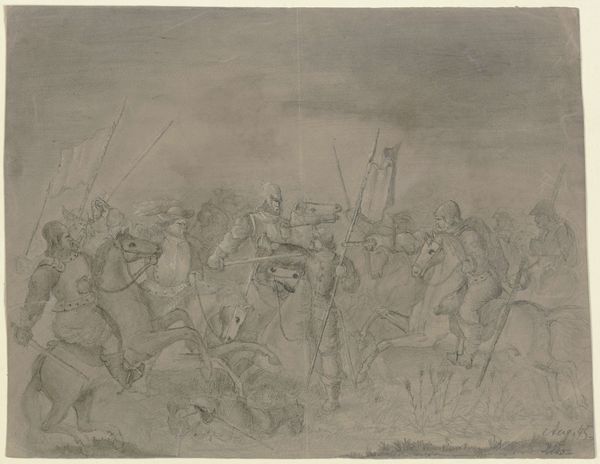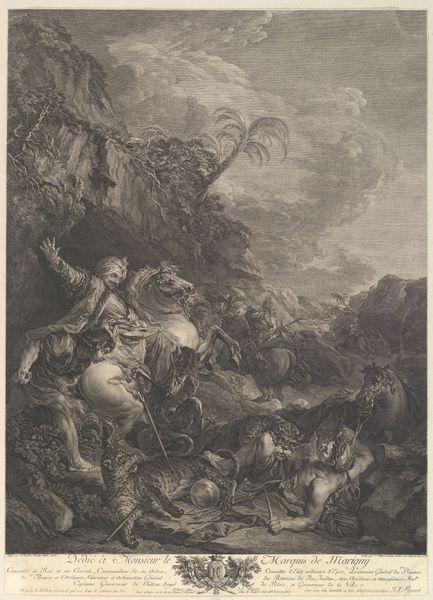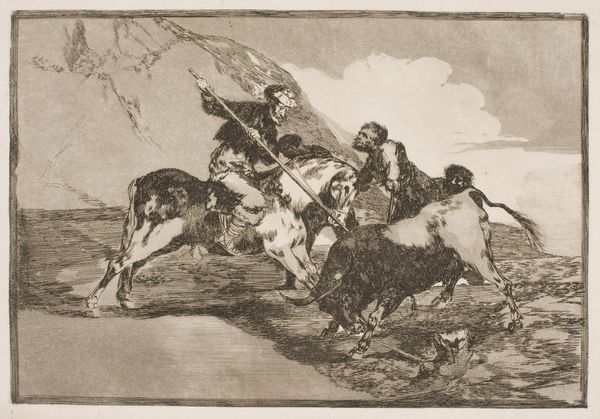
A General on Horseback (Charles of Lorraine) late 17th/early 18th century
0:00
0:00
print, engraving
#
baroque
# print
#
landscape
#
figuration
#
history-painting
#
engraving
#
realism
Copyright: National Gallery of Art: CC0 1.0
Curator: Looking at Jan van Huchtenburgh's "A General on Horseback (Charles of Lorraine)," created in the late 17th or early 18th century, the first thing I notice is the density of the engraving. The textures practically jump off the paper. Editor: It definitely has a weighty feel. The carnage in the foreground creates a very dramatic scene – all this fighting for who knows what? The engraving really emphasizes the toll of war on the bodies of men and animals. Curator: Right, but let’s focus on the "how" for a moment. The meticulous hatching and cross-hatching used for shading speaks volumes about the labor involved. Think about the workshop producing these prints, the specialization of tasks, the transfer of images... Were these luxury objects? Were they designed to glorify war for popular consumption? Editor: It's not separate from the socio-political function! Representations like this play a powerful role. The idealized general on horseback – elevated and seemingly untouched – starkly contrasts with the reality of death and destruction all around him. Whose story is being told, and who is being silenced in the process? Curator: Exactly. Huchtenburgh's choices–the use of line, the contrast of light and shadow– all those artistic techniques served a purpose, which brings us to questions of distribution. How many impressions were made? Where were they sold? Did these images reinforce class structures and contribute to maintaining an elevated place for war heroes in the collective consciousness? Editor: And whose gaze is validated? The General is, unsurprisingly, the central figure here, almost entirely devoid of any emotional affect. The anonymous mass of the dead and dying exist simply to underscore his power. Do we, as viewers, engage in that same valorization when looking at it now? I find the romance of warfare profoundly disturbing given the power structures it perpetuates. Curator: Perhaps by considering the artist’s process, materials, and even the conditions of sale, we are at least in part moving away from such simple hero-worship toward a more informed understanding. I like that we’ve considered this piece on multiple levels: not just image, but object, with complex roots in social reality. Editor: Absolutely, a potent image and an opportunity for a powerful inquiry! Let’s ensure our visitors consider all these angles.
Comments
No comments
Be the first to comment and join the conversation on the ultimate creative platform.

